Bringing home a batch of new baby chicks can be stressful, especially if you’ve never raised chickens before.

There’s a lot to learn before you start raising chicks, and the first thing on the list is how to brood those little babies without making any mistakes.
I’ve compiled a list of common mistakes people make when brooding chicks. I’ve even made some of these mistakes myself over the years. It helps to go into this new venture with as much information as possible, so you can raise your chicks to be happy, healthy hens.
11 Common Chick Brooding Mistakes
1. Using the Wrong Litter/Bedding
Choosing the wrong type of bedding for the chick brooder is hands down the most common mistake people make.
It’s an easy mistake to make. Farm supply stores sell so many different types of bedding. At first glance, it seems it doesn’t matter what you pick because you’re just going to throw it out every other day, right?
However, the bedding you choose for the chicks does matter, for several reasons.
Some bedding isn’t absorbent
Proper chick bedding should be able to absorb their waste to make the environment more comfortable and less smelly.
Many people try to brood their chicks on flat newspaper or shredded paper because it’s inexpensive.
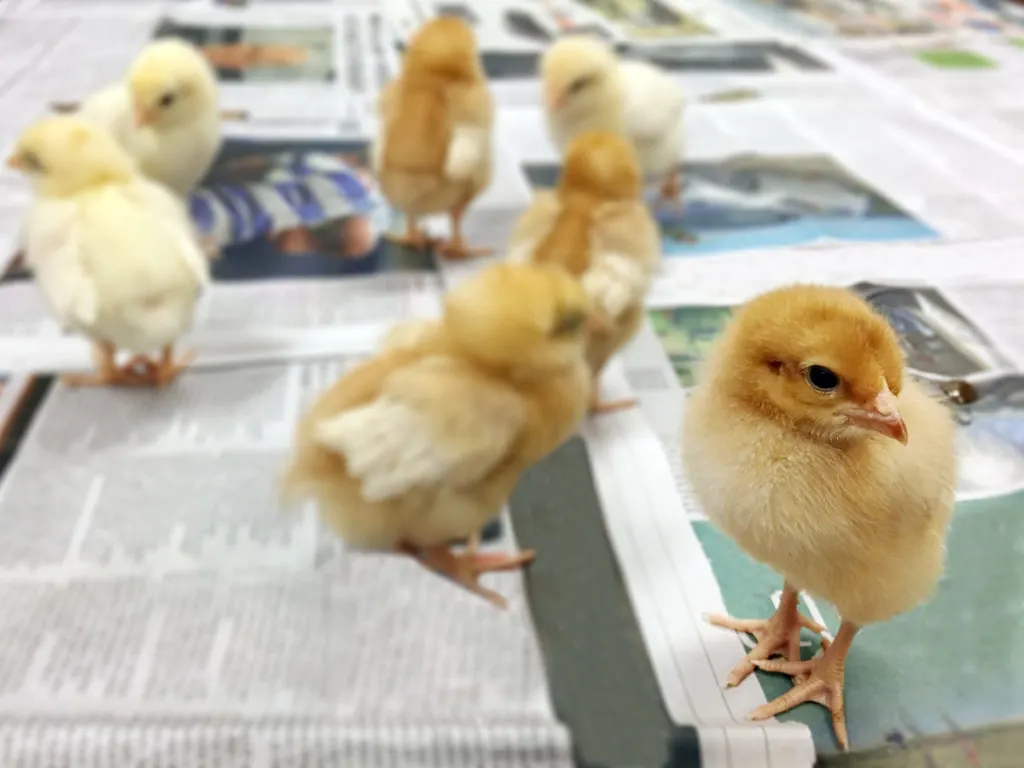
Both of these options aren’t absorbent and will result in a smelly brooder that quickly fills with waste, making a very unhealthy environment for your chicks.
Some bedding is bad for chick health
Not only is flat newspaper unabsorbent, but it also can permanently disfigure your chicks.
Chicks can’t get a good grip on slippery newspaper, which causes their legs to splay out to the sides, an affliction that can become permanent.
Cedar shavings are another bad choice for the brooder.
Cedar is an aromatic wood, which might seem like a nice choice for a brooder, but really isn’t. Chicks have very fragile respiratory systems, and aromatic bedding can cause problems with their breathing.
While it’s not guaranteed that cedar shavings will have a bad effect, it’s common enough that it’s best to avoid cedar entirely in the brooder.
The best choices for brooder bedding
So now that we know what not to do, what should you use in the brooder? There are several great choices for bedding.
For the first few days of chick brooding, we like to use paper towels as the brooder bedding.
It’s absorbent, easy to clean out and replace, and best of all, the chicks don’t try to eat it. When chicks are just a few days old they put everything in their beaks.
It’s best not to give them any options to eat their bedding until they learn what’s food and what’s not.
After those first few days, you can start brooding with pine shavings, aspen shavings, straw, or hemp bedding. Of these, straw is the least absorbent, but will still work if that’s what you have available.
We love to use low-dust pine or aspen shavings in the chick brooder.
2. Putting Chicks in the Coop Too Soon
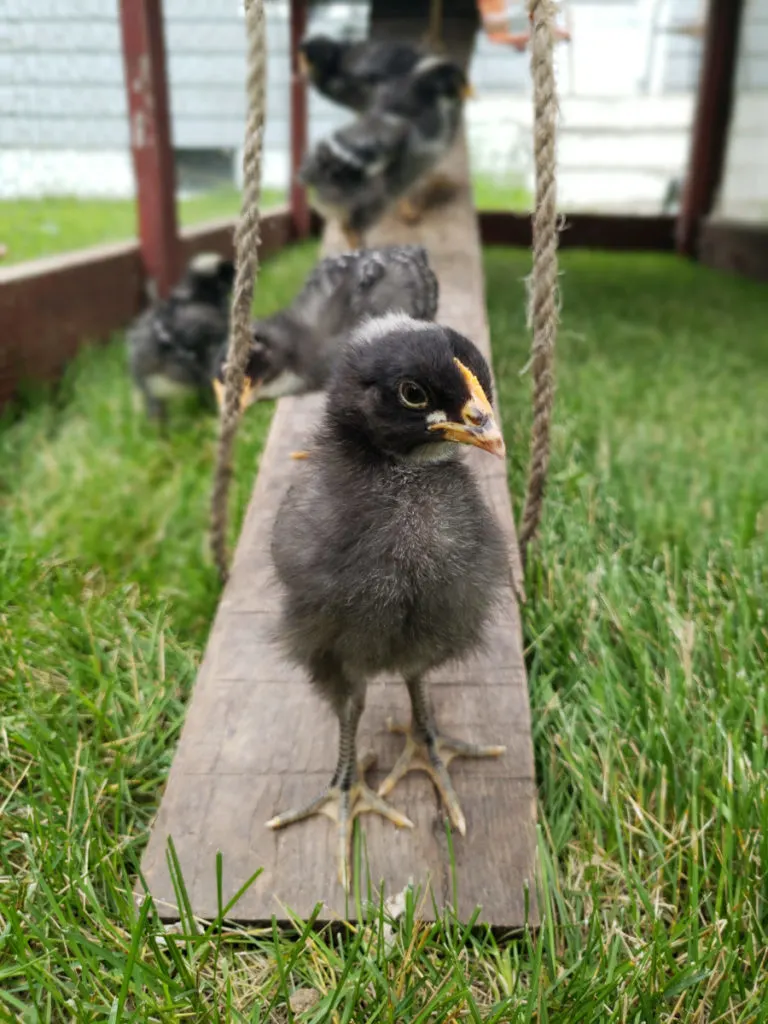
Chicks should be fully feathered and outside temps should be above 65 degrees before you move them to the chicken coop.
Moving the chicks outside too soon could be catastrophic, so it’s important to brood them in the safety and warmth of your home until it gets warm enough. There are three reasons you may want to keep your chicks in the brooder for a little longer.
Unpredictable weather
If you got your chicks in the late winter or early spring, you need to be very careful about when you decide to stop brooding them.
In many places, cold snaps and sudden winter storms can happen even in mid-April and early May. Your chicks need protection from the cold until they’re capable of protecting themselves.
Protection from other chickens
If you’re adding to an existing flock, you need to be especially careful with adding chicks to the coop.
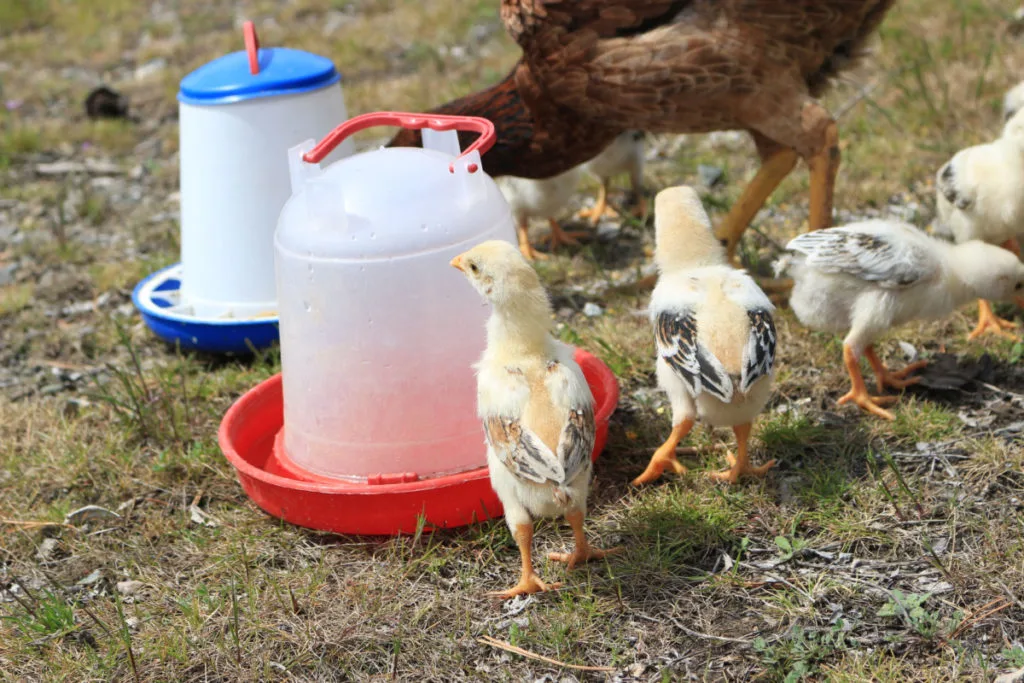
You can’t simply put the chicks into the coop and expect a peaceful transition. Wait until the chicks are big enough to defend themselves from other hens, and introduce them very slowly to the flock.
Protection from predators
Other chickens aren’t the only reason you need to protect your chicks, they’re also susceptible to predator attacks when they’re young. Predators of all shapes and sizes prey on chicks, and some, like rats and raccoons, are experts at getting into the coop.
Before you move your chicks to the coop, be sure to predator-proof your coop and make sure the chicks are big enough to make them less of a target.
3. Not Securing Your Heat Lamp Properly
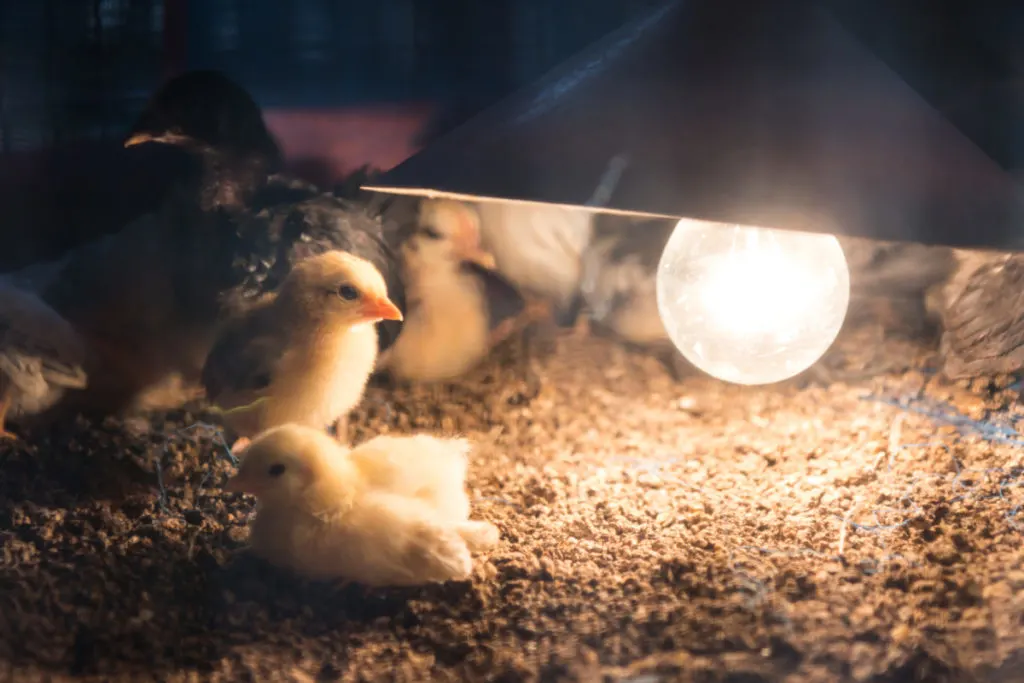
This is one of the biggest and most dangerous mistakes you can make while brooding chicks. Heat lamps are affordable and plentiful, which makes them an easy choice for heating your brooder. However, they’re notorious for causing house and coop fires, so it pays to be careful when setting them up.
We know from experience that the clamps that come with heat lamps are unreliable and frequently fail, which puts them at risk for falling into the brooder.
How to secure your heat lamp
- Make sure your heat lamp has a wire cage to keep the bulb from touching anything.
- Put a wire lid on the brooder, this way if the lamp does happen to fall, it won’t fall into the brooder.
- Secure your lamp at least two ways, three is better. Use the clamp that comes with the lamp, but also secure it with a chain and/or wire.
If the thought of using a heat lamp scares you, there’s another option for keeping your chicks warm. The Brinsea ecoglow is a safe and effective brooder heater that will put your mind at ease.
4. Making the Brooder Too Hot or Too Cold
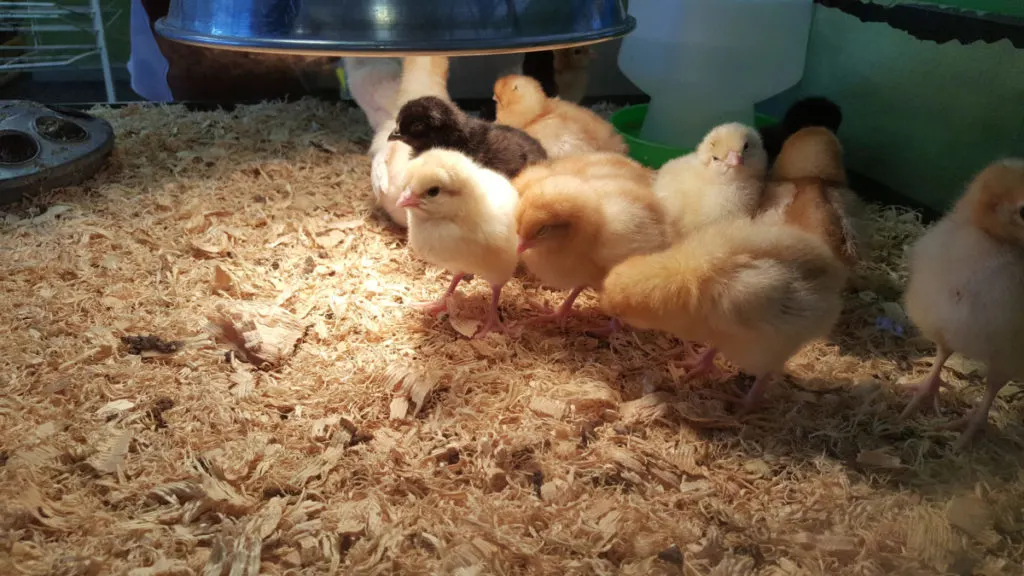
For the first week or two of raising chicks, the brooder should be around 95 degrees. If the brooder is hotter or colder than that, your chicks will suffer and could even die.
It helps to use an infrared thermometer to monitor the temperature inside the brooder so there’s no guesswork. As an added bonus, the chicks will have fun chasing the laser light around for playtime!
As the chicks age and begin to feather out, you can slowly reduce the heat in the brooder by turning down your heater or moving the heat lamp up a few inches each week. You eventually need the brooder temperature to be around 65 degrees before you transition the chicks outside to the coop.
This isn’t an exact science, learn to look for cues from your chicks that they’re uncomfortable with the temperature. If your chicks are peeping extremely loudly and all huddling together, they’re too cold. If they’re sleeping constantly, holding out their wings, or panting, they’re too hot.
It’s best to create two ‘zones’ in the brooder so the chicks can self-regulate. We like to keep the heat lamp over one half of the brooder only, this way if the chicks feel too warm, they can move away from the heat.
5. Giving the Wrong Kind of Food
For baby chicks to thrive, they need the right type of feed. Make sure you buy chick starter for your babies, not just basic chicken feed. Chick starter is the right size for babies to eat and provides all the nutrients needed for their growing bodies.
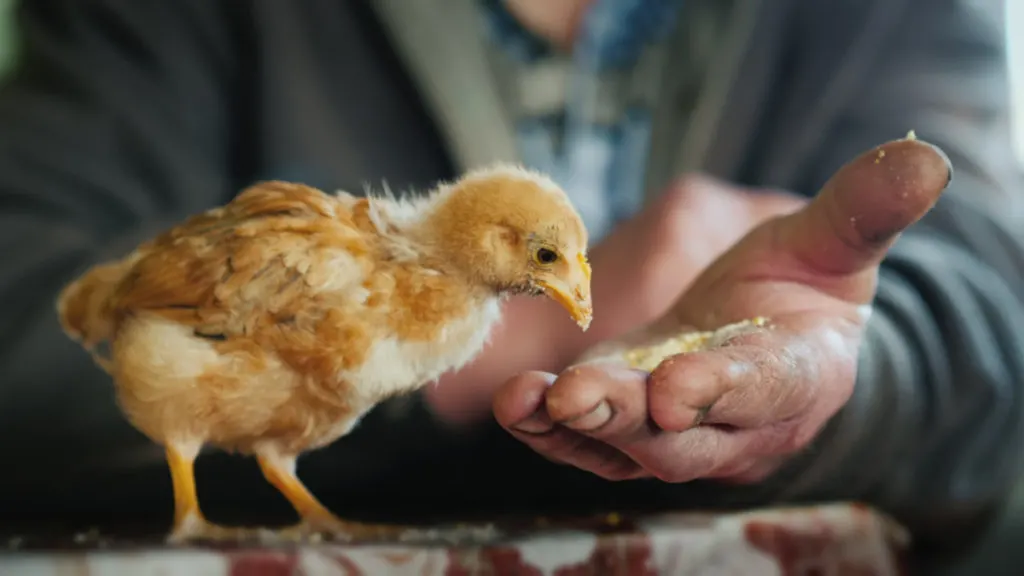
Feeding treats too soon
Be careful with giving treats, they need to be introduced at the right time and in the right circumstances. All baby chicks truly need is chick starter.
But if you want to feed some treats, wait until they’re at least two weeks old and also provide access to chick grit. The grit helps them to digest the treats. Follow the basic rule of giving 90% feed and 10% treats.
6. Not Enough Space in the Brooder
Your brooder needs to be big enough to house your chicks until they’re fully feathered, usually around 6-8 weeks old.
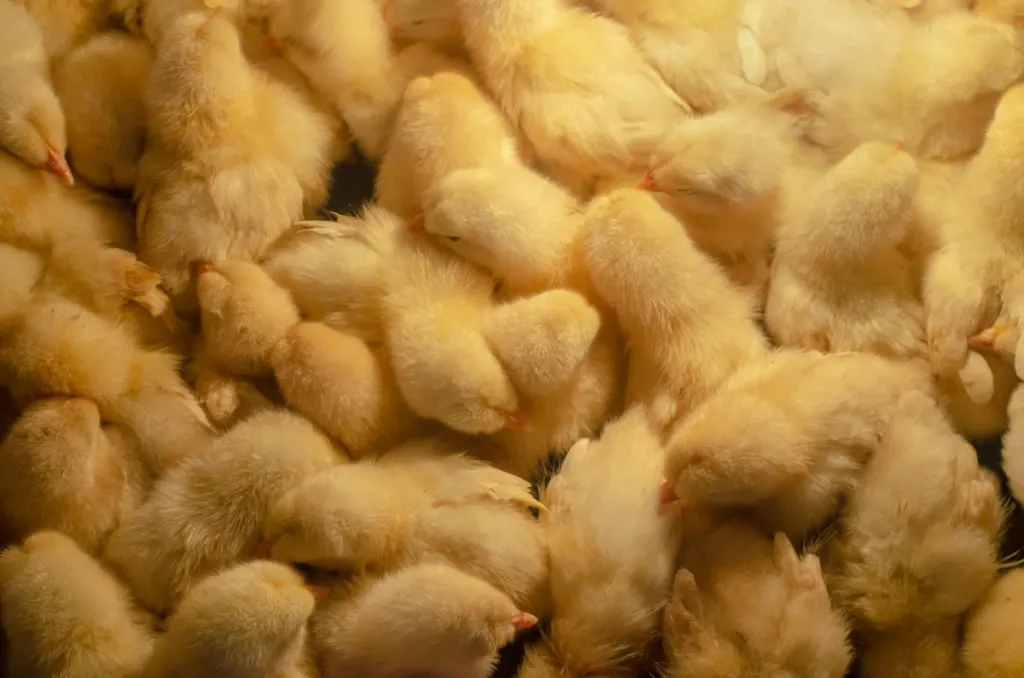
Chicks grow very fast and quite big in this time period, so make sure you’re accounting for their size not only when they arrive, but 6 weeks later.
Chicks that are too crowded in the brooder will be unhealthy and unhappy, they may even take to pecking at each other from the stress.
If your brooder isn’t big enough to house all your chicks, consider using several brooders at the same time to ensure they have enough space. Each chick will need at least 7 square inches in the brooder, but more space is certainly better.
7. Not Enough Protection from Pets, Kids, or Escapes

The chick brooder must be placed in an area where they’re protected from curious kids and pets.
Young children should always be supervised when handling chicks, so it’s best to keep the brooder out of the way of temptation by keeping it in a blocked-off space.
Cats, dogs, and other household pets also can’t be trusted around baby chicks. Even the most well behaved pets can turn in an instant and harm your chicks.
Another danger to your chicks is their own curiosity. When chicks learn to jump and fly, they can easily hop out of the brooder and get lost in the house or unable to get warm.
You can avoid all of these issues by keeping the brooder in a closed off room, and keeping a wire lid on top of the brooder. This will keep your chicks safe.
8. Not Checking Frequently for Signs of Illness or Distress
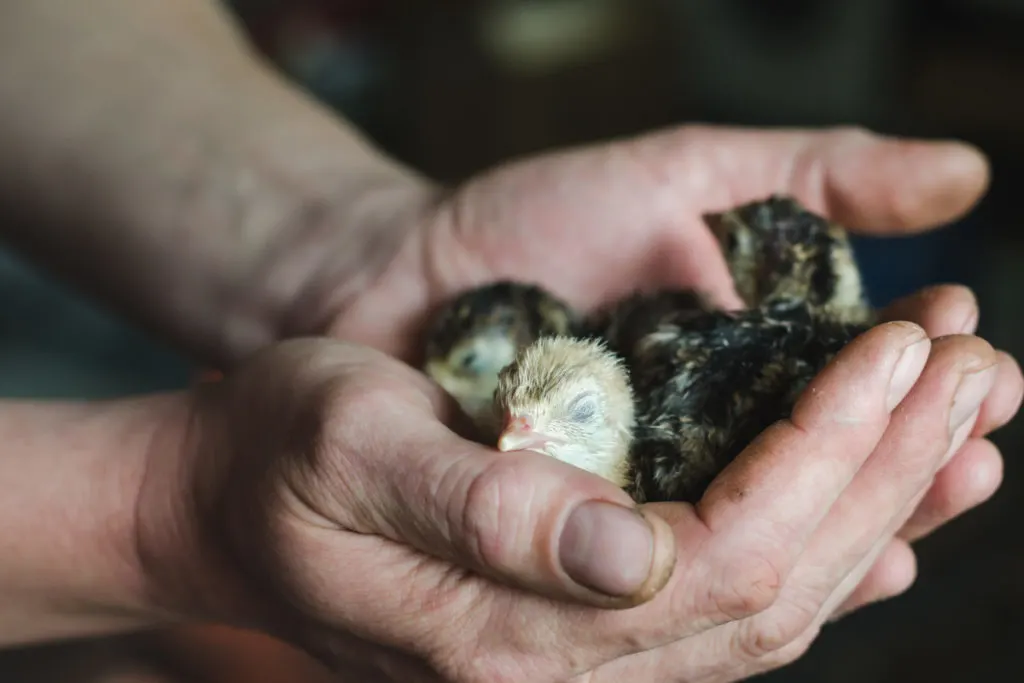
Chicks are prone to all sorts of illness and injury, so it’s best to keep a close eye on them for signs that something is wrong.
The most common issue a small-scale homesteader will come across with chicks is pasty butt. Chicks need to be checked daily for this common affliction, as letting it go without treatment can result in the death of your chicks.
Check each chick’s vent every day for hardened poop, if you do find any, use a wet paper towel to soften it and gently wipe it away.
9. Not Cleaning Often Enough
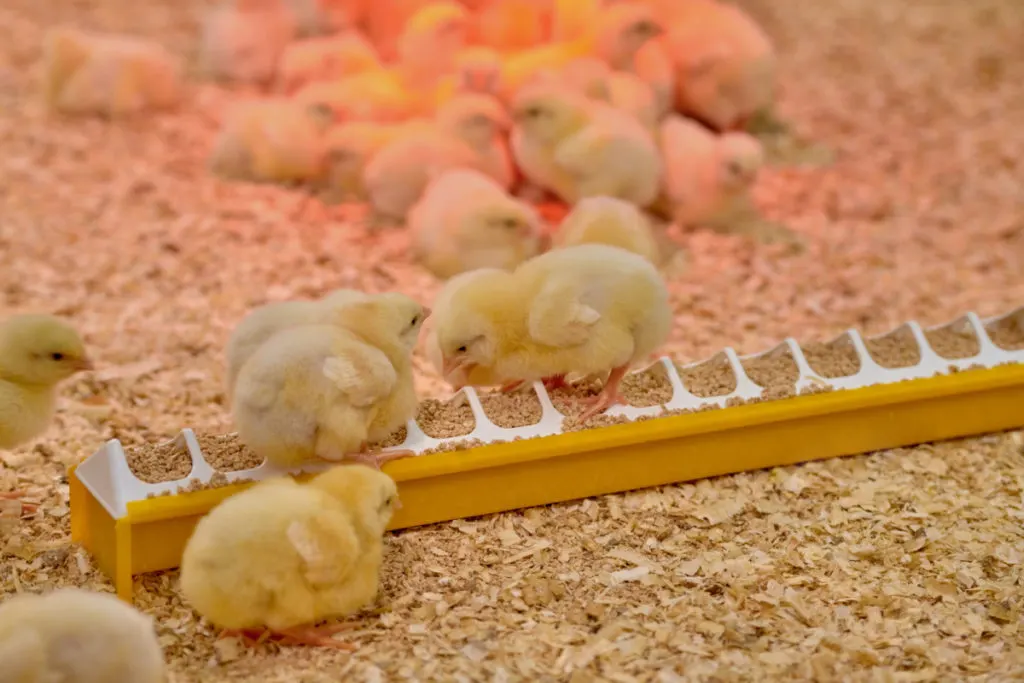
No one likes to live in their own waste, and for your chicks, this is not only unpleasant, but dangerous to their health.
Chicks are fragile creatures and susceptible to a number of diseases. The very best way to avoid illness in your little flock is to keep their brooder ultra clean.
We clean out the brooder bedding and replace it every day. You’ll find that chicks poop a lot, and are pretty indiscriminate about where they poop. You certainly don’t want the chicks to be sleeping in, stepping on, or pecking at their own waste.
We also clean out and replace the chick’s water at least twice a day, sometimes more. Chicks absolutely need clean and fresh water at all times in order to stay healthy.
You’ll notice that chicks love to practice their free-ranging skills in the brooder, and tend to kick their bedding and poop into the water. Refresh it as often as you can.
10. Not Having the Brooder Set Up and Ready Before You Get Chicks
I certainly know that feeling of temptation when you walk into the feed store during chick days. It’s so easy to buy a few chicks on the spot to add to your flock, but this is a big mistake.
It pays to plan out your chick purchase ahead of time to reduce stress on your chicks during these first few days. Relocating to a new brooder is already tough on them, so you should focus on making the transition as seamless as possible.
Have the brooder set up with food, water, and bedding, as well as heated for several hours before you bring chicks home. This way they don’t have to focus any of their energy on getting warm when you first bring them home.
11. Not Providing Proper Ventilation or Air Quality
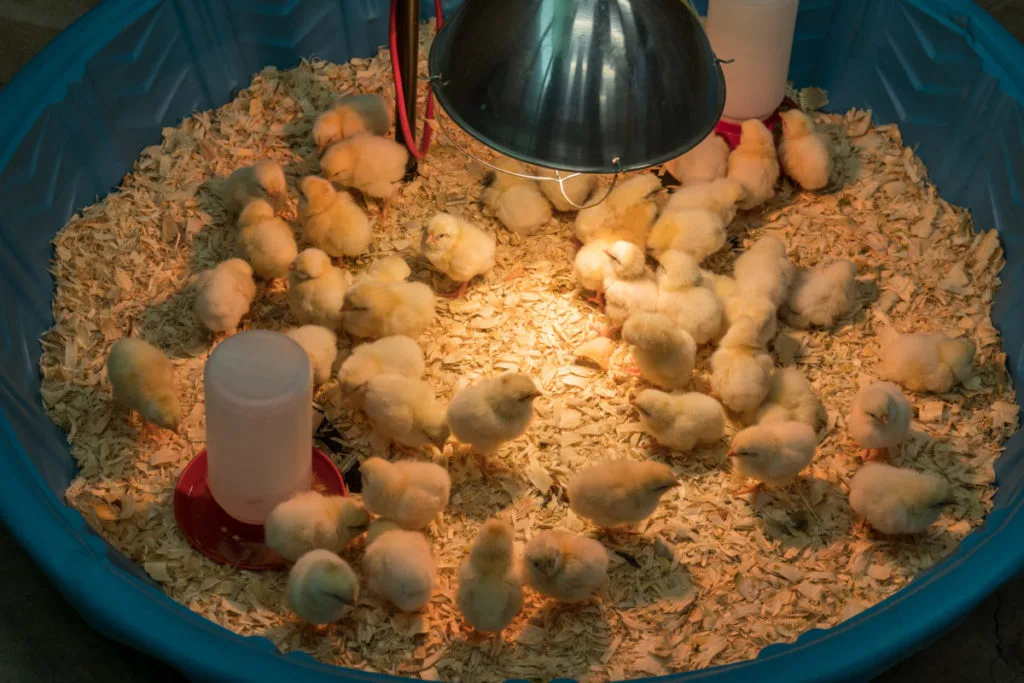
Brooder cleanliness is not the only important factor in keeping your chicks healthy, air quality matters too.
Chicks and their bedding can create a lot of dust and moisture in the air, two things that are bad for their health. Make sure the room your brooder is in is properly ventilated so the air doesn’t get stagnant.
Be careful not to confuse ventilation with drafts though, as there should never be air blowing on your brooder.
Putting some time into understanding common brooder mistakes and working to avoid them is so important for the health and happiness of your flock. Brooding chicks the right way from the start sets them up for a bright future of laying delicious eggs and living a long life.
If you need more help with your new flock, here’s how to raise chickens on a dime.

Get the famous Rural Sprout newsletter delivered to your inbox.
Including Sunday musings from our editor, Tracey, as well as “What’s Up Wednesday” our roundup of what’s in season and new article updates and alerts.

